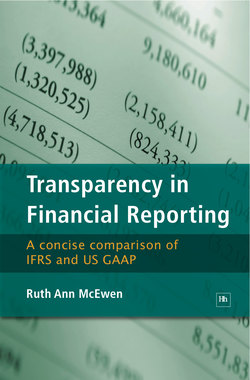Читать книгу Transparency in Financial Reporting - Ruth Ann McEwen - Страница 12
На сайте Литреса книга снята с продажи.
Оглавление3. Legal Basis of US GAAP and IFRS
A. Common law versus code law
Fundamental differences exist between US GAAP and the accounting rules of other countries. US GAAP consists of rules that are independently created, are considered to be “best practices” and serve as the basis for litigation. US GAAP as promulgated by FASB can be copyrighted and must be purchased by users. [18] Rappeport (2008) suggests that much of the basis for US GAAP is the common-law system modeled after that of Great Britain. Alternately, numerous other countries model accounting standards on civil law in which the standards are incorporated into a code of law and are freely distributed. Code law is created by the government and is enforced through governmental penalties.
FASB’s recent codification of accounting standards [19] into a single code notwithstanding, US GAAP is common law and is considered by some to be the superior method of standardizing accounting rules. Under common law, the standards can be changed by standard setters with oversight by governmental agencies without the time consuming and political inconsistencies attributed to code law based standards. Common law penalties are exacted by shareholders in the form of litigation. Common law based standards are considered to be more transparent, are revised in a more timely manner and are more market-oriented. [20]
Code law standards, on the other hand, require a change in law to change the standard. Considering that IFRS governs the accounting standards of numerous countries with differing accounting laws, it would seem likely that complete convergence is impossible. “Carve-outs”, or arbitrary changes to the standards, seem inevitable. The idea that US GAAP and IFRS will completely converge and that all users will be reporting under identical standards seems somewhat idealistic.
B. The codification
Current accounting standards in the US are extremely detailed. Prior to FASB’s codification of accounting standards, a US GAAP hierarchy of sometimes conflicting and inconsistent rules enabled users to potentially manage the system by interpretation. For example, prior to the codification, Statements of Financial Accounting Standards included a section entitled, “Basis for Conclusion” in which FASB provided detailed discussion of issues raised by constituents in drafting the standard. While FASB has always stated that the basis section was non-authoritative, users have implemented reporting processes based, at least in part, on language provided in the basis section. In a similar manner, Emerging Issue Task Force consensus opinions (EITFs) are authoritative; however, EITF issues with recommendations but without a consensus are non-authoritative. Users have, in some circumstances, misunderstood or misused the distinction.
FASB’s codification of accounting standards into a single code should eliminate misunderstandings about whether literature is authoritative or non-authoritative. Beginning in July 2009, the codified text will be the only source of authoritative GAAP in the US. [21] Codified standards that have resulted from recent cooperative efforts between US GAAP and IFRS standards setters are almost identical. For example, FAS 128, Earnings per Share is almost identical to IAS 33. Both standards were written with the idea that one standard would govern this issue and FASB and the IASB would be completely convergent on this issue. However, numerous other issues will require additional convergence efforts to ensure substantially full convergence. For example, standards setters must still agree on financial statement presentation, financial instruments, leases, revenue recognition, fair valuation, post retirement, and a common conceptual framework.
18 See Rappeport, “One Standard, Many Laws”, CFO April 2008, pp. 41-42 for a discussion of the contrast between the proprietary US GAAP system, and the systems of other countries. [return to text]
19 www.fasb.org/news/nr011508.shtml. [return to text]
20 Id. [return to text]
21 See R. A. McEwen, T. Hoey and J. Brozovsky, “Codification: A Crucial Step Toward Simplification” Accounting Horizons, 20:4 (2006), pp. 391-398. [return to text]
